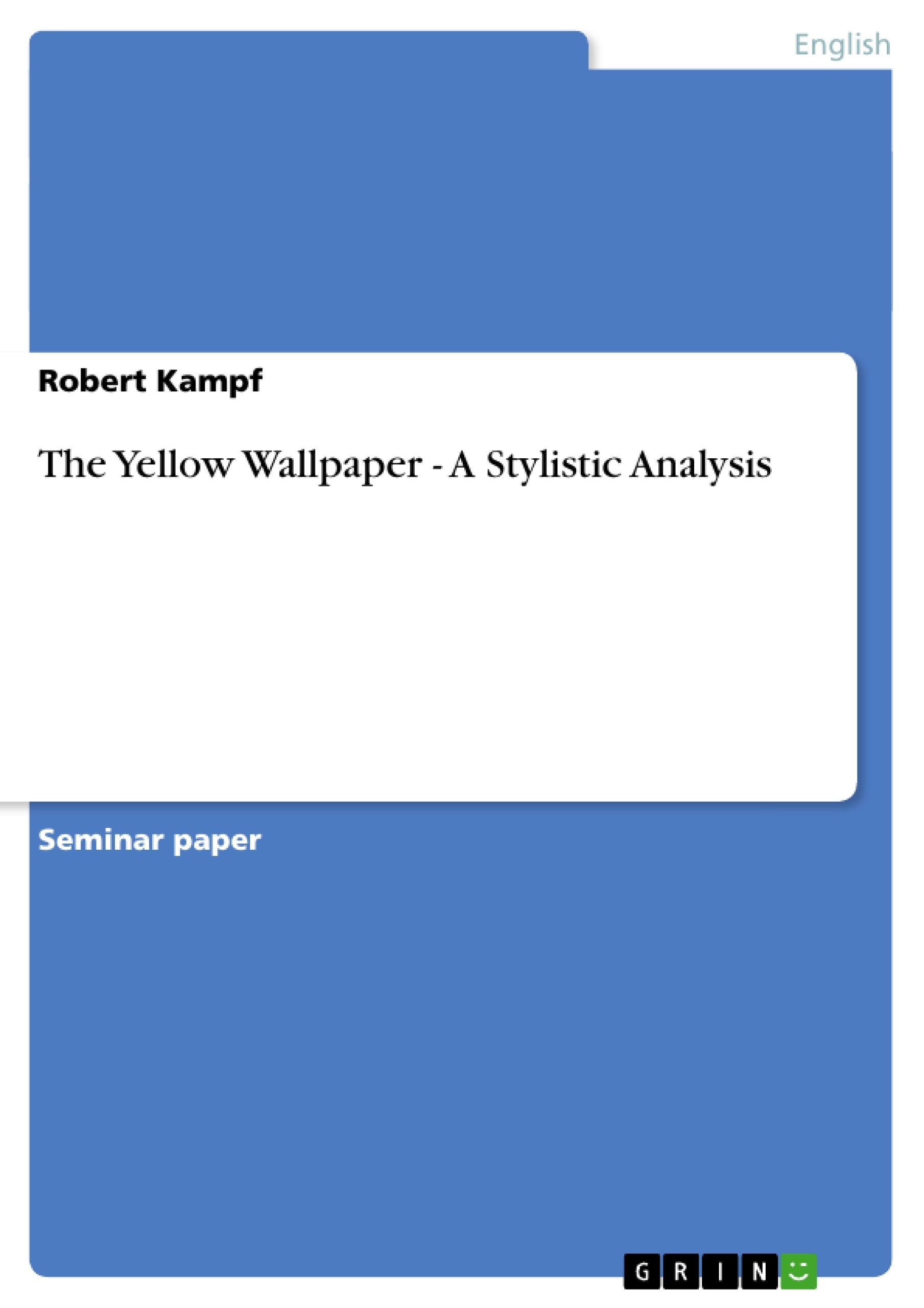Excerpt
Index of Contents
1. Introduction
1.1 Ambition of the Survey
1.2 Introducing Gilman and "The Yellow Wallpaper"
2. Analysis
2.1 Perspective
- Point of view
- Narrative features
- Implied authorship
2.2 Stylistic Features
- Foregrounding
3. Reconsideration
- The question of interpretation
1.1 Ambitions
The task will be to examine the given extract in terms of style, narration and possible meaning emerging from the text and it’s mostly foregrounded elements. Further ambitions are to analyze how Gilman uses autobiographical elements for an implied authorship'1 and to discuss the problem of interpretation. This question arises automatically, when dealing only with extracts from, therefore not complete, texts, and will be deepened in the concluding chapter: "Reconsideration”.
1.2 Introducing Gilman and “The yellow Wallpaper”
Charlotte Perkins Gilman strongly influenced the feminist movement of the late 19th and early 20th century with her work including journalistic texts, books concerning social realities of women’s lives and poetry. Gilman, the great-niece of Harriet Beecher Stowe, had a complex relationship to men, for her father abandoned the family after her mother had a miscarriage. Gilman’s first marriage ended in a divorce, which is quite controversial for her time, and strengthened her role as independent and self-determining woman. When she learned that she had incurable breast cancer, Gilman committed suicide on August 17, 1935. "She was an incredibly influential and ahead-of-her-time woman, and deserves more recognition.”2
2. Analysis
The analysis is based upon the theories presented by Mick Short in Exploring the language of poems, plays and prose: chapter 9-113. The concepts and linguistic terms, used in the following discussion, will be explained during the analysis on examples from the extract itself.
2.1 Perspective
The story uses the perspective of a first-person narrator, which is clearly marked from the beginning by the personal pronouns: "myself”, "I” and "me”.4 This kind of narration involves a closer relationship on the novelist-reader level than any other kind of narration, even though it is limited to the impressions of one character in the story. On the one hand this helps the reader to get to know about feelings and ideas of the narrator, but on the other hand he only has little insight in the position of other characters. The reader’s perception of the fictional world, the story takes place in, is also influenced by the narrator, so the reader has to rely on his descriptions of it.
By the way of example there are over 40 adjectives and adverbs referring to the fictional world and describing the house and surroundings, to give the reader a picture of it. Here we have to take into account that especially the word class of adjectives cannot be a definite entity for us when reading a text, for they are strongly subjective. So when the narrator describes the house as "the most beautiful place”5, it could also be a rotten, run down structure on other conditions. This depends on one’s own value of beauty. Therefore the narrator uses as much descriptive elements as possible to create a coherent picture of the fictional world, which addresses the readers imagination and gives him a realistic picture. Gilman manages that one very well, for her depiction is not only reasonable but also very detailed.
Another question is the reliability of the narrator, for his point of view implies an increased limitation compared with other styles of writing. In other words the narrator himself is limited to his perception and the reader following the remarks in the story is also limited in second instance. Here the reader has to decide whether he believes the narrators accomplishments or not. Both cases lead to a different understanding of the story and are crucial for its interpretation. "The Yellow Wallpaper” uses a special technique to reassure the reader of its "authenticity”, by suggesting an implied author. Short refers to this term only when talking about third-person narrators, but I think this could also occur in a first-person viewpoint, for there are several elements in the text proving this theory. There are still a lot of disagreements concerning biographical elements in texts and about the question if an interpretation should consider them. Gilman uses elements in her story, which connect the fiction to reality, and therefore are essential for its understanding.
[...]
1 Webster’s New World College Dictionary 4th ed. 2002
2 Short, Mick: Exploring the Language of Poems, Plays and Prose (p. 259 f.)
3 Wells, Kim: www.womenwriters.net on August 7, 2004
4 Site launch, July 19, 1999. Last Update: June 2003
5 Short, Mick: Exploring the Language of Poems, Plays and Prose (Pearson Education Ltd., Harlow, 1996)
- Quote paper
- M.A. Robert Kampf (Author), 2004, The Yellow Wallpaper - A Stylistic Analysis, Munich, GRIN Verlag, https://www.grin.com/document/149464
Publish now - it's free






















Comments